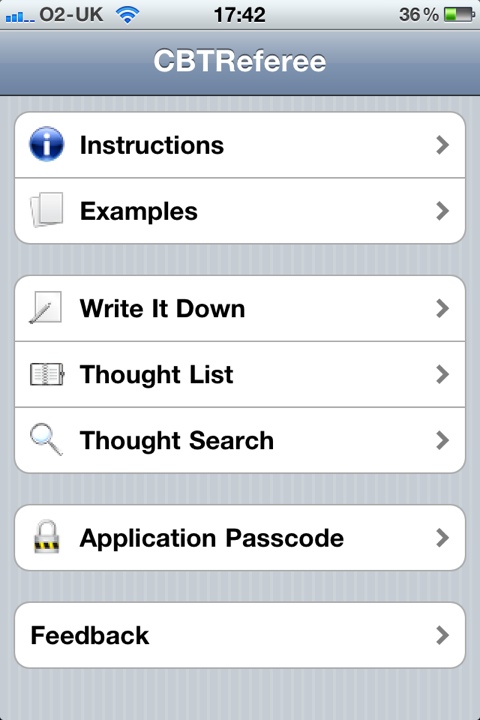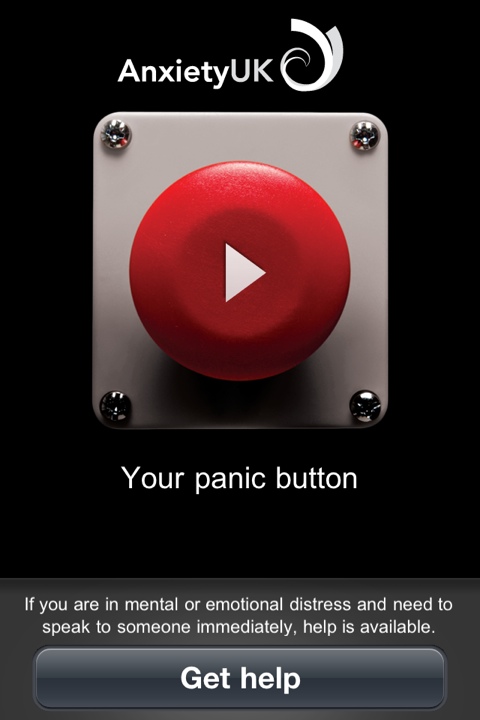CBTReferee is an iPhone app that helps the user to record unhelpful thoughts, following a Cognitive Behaviour Therapy (CBT) approach. This tool focuses on the thought diary element of the thought challenging exercise which is a common strategy in CBT interventions.
I read some of the CBTReferee website before purchasing this app and I really liked the concept of introducing this strategy with the football analogy of the ‘unbiased referee’ or ‘fair ref’ who evaluates thoughts objectively and does not allow thoughts to ‘cheat’ you into feeling down or anxious.
I was disappointed to find that quite a lot of the content of the CBTReferee website, and some elements of the app were carelessly written, for example, the description of Cognitive Behaviour Therapy (CBT) was not exact, there were typos, a blank ‘coming soon’ page, and only a very casual description of the ‘bad thinking’ which is the main focus of this tool. Having said that, their site was smart and the design of the app itself is clean and deliberate.

Although it lacks a splash screen at the start, the app itself has a clear menu system which gives you access to all of the functions on one screen.
The process of recording and editing an entry in the thought diary is straightforward enough. I like the fact that you can check off more than one type of thought error which applies to your entry. The app’s description of thought errors is arguably incomplete and brief but effective. It also gives a couple of reasonable examples. Some of the thought error labels and the phrase ‘assign forms’ are a bit confusing.
The app leaves the user to their own devices when it comes to completing the ‘referee says’ or balanced thought section. This is a bit disappointing, as without support at this stage users may find it difficult to come up with a more balanced thought. The app does contain two example entries, but in my opinion this app would benefit from more detail in this area.
Additional features:
- There is a 4-digit passcode that you can set to restrict access to the CBTReferee app on the iPhone – but there is no way of retrieving a forgotten code.
- You can search your thought diary by text entry, date, day or type of thought error.
- You can email a thought diary entry.
- You can send feedback via email from within the app.
The CBTReferee website does not make it clear what consultancy was sought to develop the CBT content of this app. With a bit more attention to detail I think this app could easily be improved, but I would recommend its use to anyone who is already familiar with thought challenging techniques. On the whole this is a great implementation of a handy and well designed thought diary app for use on an iPhone.

